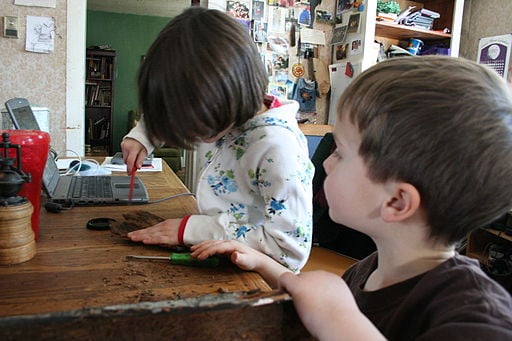There is a series of maps in a park near our house. They show what our neighborhood looked like at various times throughout history. The boys love finding the map with the landfill that eventually made our street possible. After looking at those maps the first time, we finally understood why we find so many oyster shells in our back yard.
Figuring out exactly where you are in the world is no easy task. Figuring out how that place connects to all the other places in the world, and how those places have related over time, well, that’s a life’s work. Compelling work. Maybe that’s why I’ve never met a kid who didn’t enjoy poring over a map.
I don’t know why elementary schools spend so little time on maps. They may do a unit on map skills now and again, but you don’t see second graders hunched over maps for extended periods of exploration. Wall maps, relief maps, map overlays – young people love maps if they are just given the time to explore them and some hints about how to connect them to their questions.
One of the boys’ favorite memories of homeschooling was the day we went to the Mapparium in Boston. This would not surprise Susan and Jessie Wise , who write that the boys are in the Grammar Stage, the first of three stages in a “classical education.” In their book, The Well Trained Mind, the Wise’s contend that first through fourth grade education should be focused far more on content accumulation than on self-expression and creativity. It’s not what I learned in my ed school days, but it explains my sons’ obsession with studying maps.(Read more about their ideas here.)
Today our American Revolution homeschool class spent several hours at Bunker Hill (which is really Breed’s Hill, but the British hadn’t yet read my post on the importance of knowing where you are). My favorite activity had the kids sitting around a giant, canvass floor map of Boston and the surrounding areas in June of 1775. The students first used a set of flags to mark Charlestown, Dorchester Heights, and other towns and landmarks. Next they set up British and rebel forces to retell the story of Bunker Hill. I have been reading about this battle, watching reenactments, and trying to visualize the whole thing for months now. But not until I saw it all laid out and moving around on a map, did I understand what really happened. As they were working with the map, kids were calling out things like, “Oh! That’s why they sent troops to block off the neck!”
Geography matters, not because knowing all of the state capitals will make you better, smarter, or stronger. Geography matters because peoples and cultures and histories happen in particular places. Places where the glaciers left behind drumlins that make strategic battle hills. Places where silk worms encouraged global trade in ways that are still hard to fathom. Places where people had to appease angry volcano gods. Geography matters.
As a person of faith, geography matters because my God is a god of place. To participate in his love for the world and the people of the world, I need to understand their place in that world. That logic might be pushing it with the boys. Sometimes, they just want to find all of the countries that participated in the last World Cup. In any case, they have no question about the role of geography in a great education. It matters.










